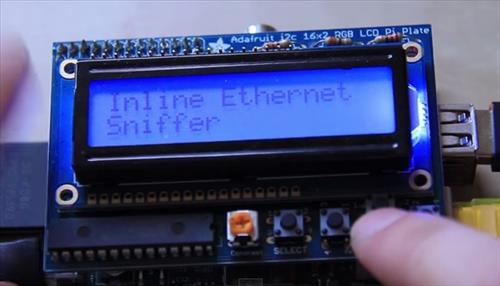Top 10 Picks for Raspberry Pi Sensors for your Projects
Sensors are the way a Raspberry Pi communicates and sees the world and can be necessary depending on the project you have planned.
The popularity of the Raspberry Pi gives it many pre-made sensors ready to do whatever job is thrown its way.
There are whole sensor kits that can be bought such as the following, or singly as listed below.
SunFounder 37 modules Raspberry Pi Sensor Kit, 26-Pin GPIO Extension Board Jump wires
Our Top 10 Picks for Raspberry Pi Sensors for your Projects
1…
Raspberry PI 5MP Camera Board Module
Integrating a camera with a RasPi with small camera modules can be done with cameras such as this popular 5MP camera. If you want to setup a surveillance system, baby monitor, IP cam and so on then this is a good option. The camera plugs into a RasPi with a ribbon cable and than software setup to use it. The software setup may be moderately difficult depending on your skills but the good news is like many Raspberry Pi projects there is plenty of documentation.
2…
Leaning Tech SX300 Expansion Board for Raspberry PI B+ Designed for Ease of Use
The SX300 Expansion Board for Raspberry PI is a way to add Bluetooth, Microphone input, stereo audio output, WiFi, RTC, IR receiver, SATA and More. It was designed for use with the Raspberry Pi B+ but also works with the Raspberry Pi 2. There are other expansion boards to use with a RasPi that give it features that are not pre-built in.
3…
365buying DS18B20 Temperature Sensor – Waterproof Digital Thermal Probe Sensor DS18B20
Reading temperatures can be done with a temperature sensor. A few resistors maybe necessary depending what you are reading the temperature of basically adjusting the sensitivity.
4…
5 inch 800*480 Resistive Touch Screen HDMI interface Raspbian LCD compatible with Raspberry Pi (Pi 2) Model B B+ A+ Video Photo Display System Module @XYG
Having a small portable screen that works with a RasPi has many uses. There are many different types of screens created for the RasPi even touchscreen models like the one above.
5…
Vktech Home Appliance DHT22/AM2302 Digital Temperature And Humidity Measurement Sensor
For weather station projects here is a sensor that can read humidity and temperature.
6…
Adafruit RGB Positive 16×2 Lcd+keypad Kit for Raspberry Pi
Simple character LCD can be bought for projects that don’t require lots of video. Here is one being used to monitor a network.
7…
Happu-store Infrared PIR Motion Sensor Module New HC-SR501for Arduino Raspberry pi
Small Infrared Motion Sensor can be hooked up to a RasPi.
8…
Wavesahre MQ-2 Gas Sensor Module LP,Propane,Hydrogen Detection Sensor Gas Detector Sensor Module for Arduino Raspberry pi
Gas detectors can be interfaced to detect a range of gases.
9…
JBtek® 2 pcs nRF24L01+ 2.4GHz Antenna Wireless Transceiver RF Transceiver Module ISM – Arduino & Raspberry Pi Compatible
Wireless RF Transceivers can be hooked up to a RasPi.
10…
JBtek Raspberry Pi Bluetooth 4.0 USB adapter – For Windows 8 / Windows 7 / Vista
A simple Bluetooth dongle can be used for any bluetooth device to interface with a RasPi.











